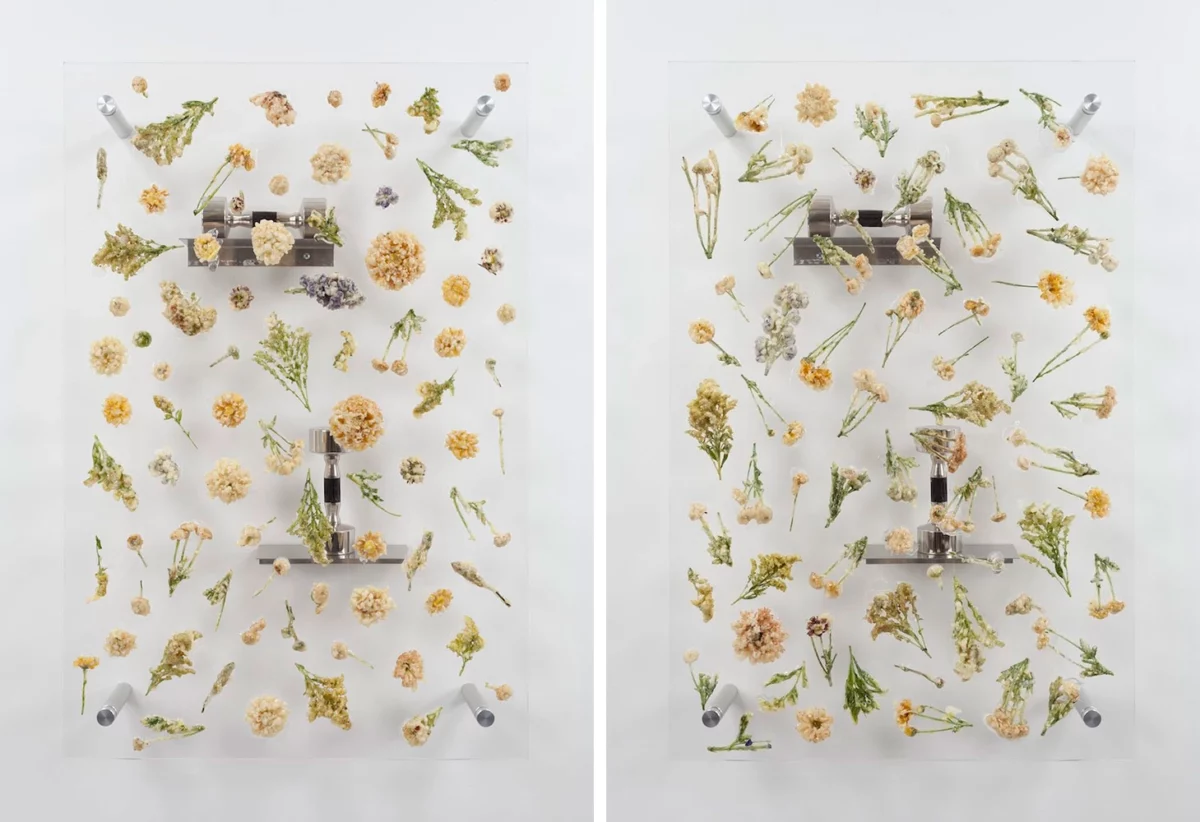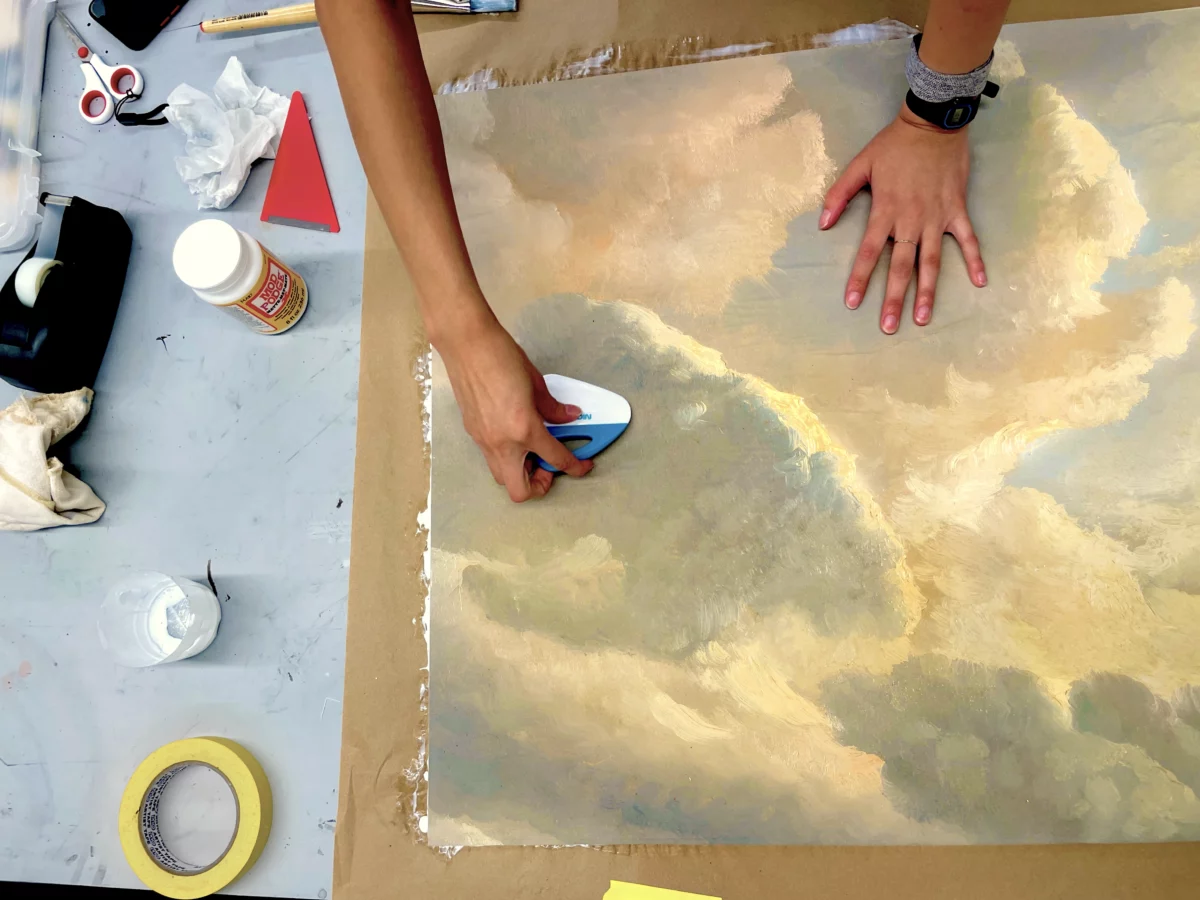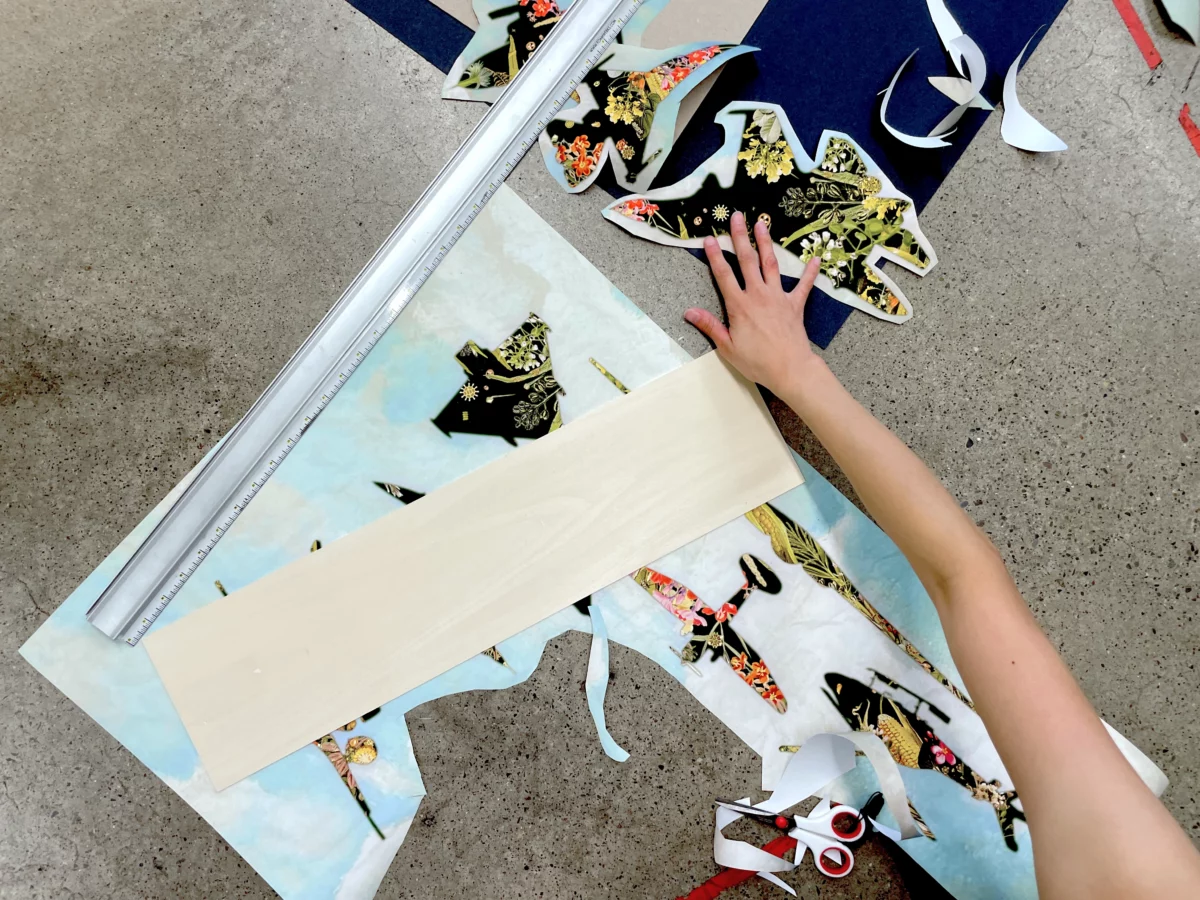“Making Art for Scientists: Materials, Processes, and Information Relay”
Hannah Munguia Flores is a third-year student at MIT working on a double master’s degree in Aerospace Engineering and Technology and Policy. On most days she studies the carbon cycle, and searches for sustainable crops that could be transformed into biofuels for jet engines. But on this August day, Munguia Flores was decorating paper fighter planes with a collage of grains and algae she designed on her computer.
“My academic advisor asked me to make a drawing of the carbon cycle,” says Munguia Flores, who took “Making Art for Scientists: Materials, Processes & Information Relay” over the summer with instructor and artist Timothy Lee. Offered through the MIT Arts Studios (formerly the Student Art Association), the course invites scientists and engineers to explore new ways to visualize and represent their research. “And I realized there was a part of it I was missing. In this class, excuse the pun, I was able to paint in the empty spaces. I learned there were more ways to do research than just sitting at my desk.”

Transforming Abstract Ideas
Over eight summer sessions, Munguia-Flores and her fellow students learned to make art across a variety of media. Some, like Munguia-Flores, merged digital art with paper cutouts. Others worked in animation or oil painting. And in learning to make art, all of them acquired a new language that helped them articulate their research and gave them a new perspective on their chosen fields of studies. “This is not a class about data visualization design or medical illustration,” says instructor artist Timothy Lee. “It’s about taking that information, that data, and interpreting it in a new context, to transform that data into an artwork that conveys something the raw data may not convey.”
An interdisciplinary artist whose works explore themes of racial politics, migration, and sexuality, Lee is an ideal guide for students who want to merge their passions for research and art. He studied neuroscience, biology, and studio art as an undergraduate at Wesleyan University and earned an MFA in Computational Arts from Goldsmiths University of London. “This course came naturally to me,” says Lee, who will present a major project at the Museum of Fine Arts Boston next summer. “It blends both my interests, science and art. Two disciplines that are often presented as complete opposites, that allegedly use different hemispheres of the brain. But these two disciplines can cross pollinate, and can feed each other.”

Converting Data Into Artistic Insights
Making Art for Scientists is not for complete artistic novices; Lee recommends students show some proficiency and experience in art making or take introductory drawing or painting classes before they enroll. In the first class session, Lee asks students to think about the aspects of their research they most enjoy, then to describe what kind of images that come to mind when they think about those aspects. “This exercise helps students formulate a method to view their own research,” says Lee. “They may already know how much they like what they do. But the exercise helps them understand why.”
Marcelo Barrazza, a post-doctoral student in astronomy, was already an experienced painter when he enrolled in this course. He took Lee’s course to help develop a more effective means of representing the process by which planets and planetary systems are born. “It’s a process that happens all the time in the universe,” says Barrazza, a native of Chile who did his PhD work at the University of Heidelberg in Germany. His SU23 project was an oil painting showing a planet taking shape out of the rotating platter of gas and dust known to astronomers as the protoplanetary disk. “But we rarely can observe the formation process. Most of the time we work with numerical predictions. Essentially, I wanted to find a way to make these processes visible. To transform these abstract concepts into something concrete.”

Art’s Influence on the Future of Science
Once his students have chosen a topic and a medium—whether an analog technique like oil painting or a digital art like animation—Lee introduces them to the works of other artists exploring similar topics and techniques. Most class sessions begin with a series of projected art images, with Lee inviting students to reflect on how the works he presents relate to their own class projects. “It’s very useful to see artists trying to express things that are similar to what you want to express,” says Barrazza.
Harrison Canning worked on the early stages of a computer animation to represent the correlation between brain waves and a person’s state of mind and emotion. “I started thinking about the ocean, with all its ebb and flow on the surface, and the deep currents beneath that surface,” says Canning, who works in communications at a neurotechnology company (Blackrock Neurotech). “The animation will juxtapose avatars with happy and less happy facial expressions with images of waves that correspond to those emotions. It’s a way to examine complex ideas while making them more accessible, tactile, and human.”
Lee, who teaches several courses at MIT Arts Studios—and is also a lecturer at the School of the Museum of Fine Arts at Tufts, will offer this course again during the 2023-2024 academic year. He hopes more students will learn to think of themselves as artists and as scientists. “I think making art helps people think in a new way,” he explains. “It challenges you to let go, teaches you that things don’t always need to be done in a linear fashion. It asks you how you can take something abstract like data and use your skill in art to translate it into the realm of understanding. There are many artists who blur the boundaries between technology, science, and art. And what better place to do that than at MIT?”
Written by Ken Shulman
Editorial direction by Leah Talatinian

